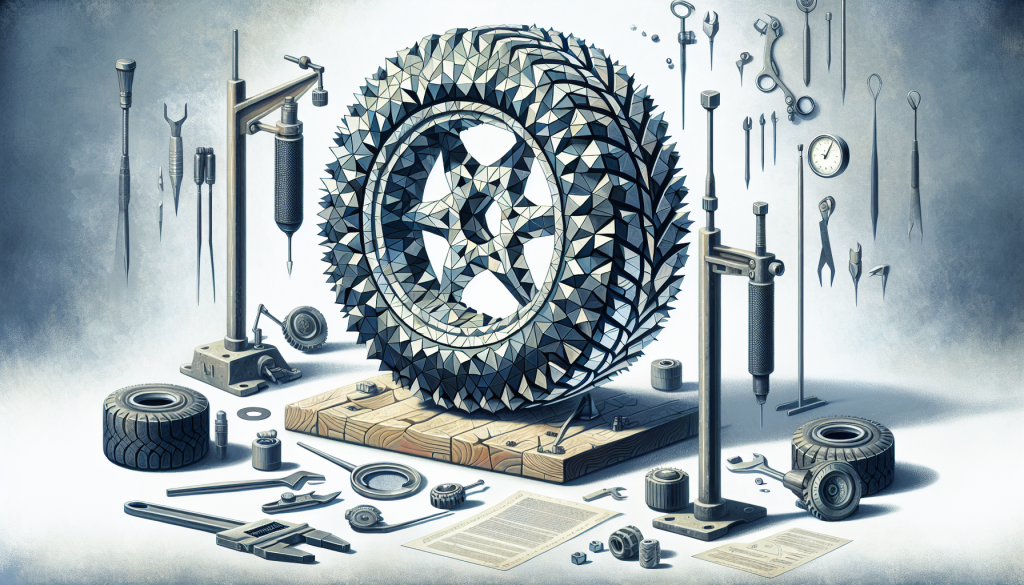Winter Tire Selection
What to Think About When Picking Winter Tires
Picking winter tires isn’t rocket science, but getting it right will keep you safe when things get icy. Winter tires are made to stay grippy and flexible when it’s cold, ensuring you don’t skid off into a ditch (Bridgestone Tire). Here’s what you need to know:
- Climate: If you’re staring down the barrel of a harsh, snowy winter, you need winter tires. They’re built to work best when it’s freezing outside (Les Schwab).
- Driving Style: Are you often on snow-packed or icy roads? Winter tires give you the traction and control you need. They’re not built to last forever but will keep you safe when things get ugly (Les Schwab).
- Performance Needs: Different tires work best on different surfaces. Some are ice wizards, while others handle well in wet conditions. Take a hard look at your daily drive and get what matches up.
Choosing wisely can turn your winter driving from a scary movie into a simple commute. Check out pros and cons of studded winter tires if you need more help making up your mind.
When to Swap Your Tires
Changing your tires with the seasons keeps them in good shape. The rubber that keeps you safe in winter isn’t fit for summer driving.
- Temperature Changes: When the days warm up and the nights don’t dip below 50º F, it’s time to change back to all-season or summer tires.
- Fuel Efficiency: Winter tires with deep treads use more fuel and wear out faster on dry, hot roads. Swap to summer or all-season tires when the weather warms up to save on gas and keep your tires intact.
- Longevity: Drive winter tires through summer? Bad idea. They’ll wear out fast and lose effectiveness (Les Schwab). Change them when summer hits to make sure they last till next winter.
| Tire Type | Ideal Temperatures | Key Benefits |
|---|---|---|
| Winter Tires | Below 45º F | Killer grip on ice and snow |
| All-Season Tires | 32º F – 90º F | Good performance in varied conditions |
| Summer Tires | Above 50º F | Top-notch handling and grip on dry roads |
Want more tips to make your winter tires last longer? Check out winter tire longevity expectations.
Making the right tire choice isn’t just about safety—it’s about saving money and driving better. Check out winter tire technologies explained for a deeper look into how tire swaps can change your driving game.
How Long Do Tires Really Last?
Cracking the Code: UTQG Ratings
Picking the right winter tires can feel like a mystery game, but the UTQG ratings strip away the guesswork. This system breaks down how tires stack up in treadwear, traction, and temperature resistance.
Treadwear: The Long Haul Indicator
Ever wonder how your tires will last compared to others? The treadwear rating is your crystal ball. Rated against a control tire (scored 100), a tire with a treadwear rating of 200 should give you double the mileage.
| Treadwear Grade | Longevity vs. Control Tire |
|---|---|
| 100 | The Benchmark |
| 200 | 2x Lifespan |
| 300 | 3x Lifespan |
| 400 | 4x Lifespan |
Traction: Wet Road Control
Nobody wants to slide around in the rain, right? The traction rating, ranging from AA (best) to C (basic), measures how well your tires stick to wet pavement.
| Traction Grade | Performance Level |
|---|---|
| AA | Best |
| A | Good |
| B | Okay |
| C | Passable |
Temperature: Handle the Heat
How well do your tires take the heat? Temperature ratings (A being top tier) show if your tires can handle those hot asphalt days without blowing out.
Need more details? Check out our winter tire performance guide for the full scoop.
Tread Patterns: More Than Just Looks
Your tire’s tread pattern isn’t just a fashion statement. It’s key to how long they last and how they perform.
Fuel Efficiency: The Hidden Saver
Rolling resistance is a silent fuel guzzler. Tires with smart tread designs lower this resistance, saving you gas and cutting emissions.
What’s the Difference?: All-Season vs. Winter Treads
All-season tires? They’re good all-rounders with moderate treads. Winter tires? They’re the heavy hitters with deep, aggressive tread patterns for mastering snow and ice.
| Tire Type | Features | Best Use |
|---|---|---|
| All-Season | Moderate Depth, Balanced | Everyday Driving |
| Winter | Deep Tread, Aggressive | Snow & Ice |
Match for Your Ride
Not every tread pattern fits all. Passenger car tires aim for smooth and steady, while SUV tires toughen up for off-road and snowy situations.
Curious? Read up on winter tire tread patterns.
Driving Styles: One Size Doesn’t Fit All
Your car and how you drive it count. Family sedan? Go for comfort and good handling. Off-roader or an SUV? Beef up with rugged, winter-ready treads.
Get our full take in the winter tire longevity guide.
Understanding these nuggets of info can make or break your winter tire experience. Your tires can only perform their best if they’re the right match for your needs.



